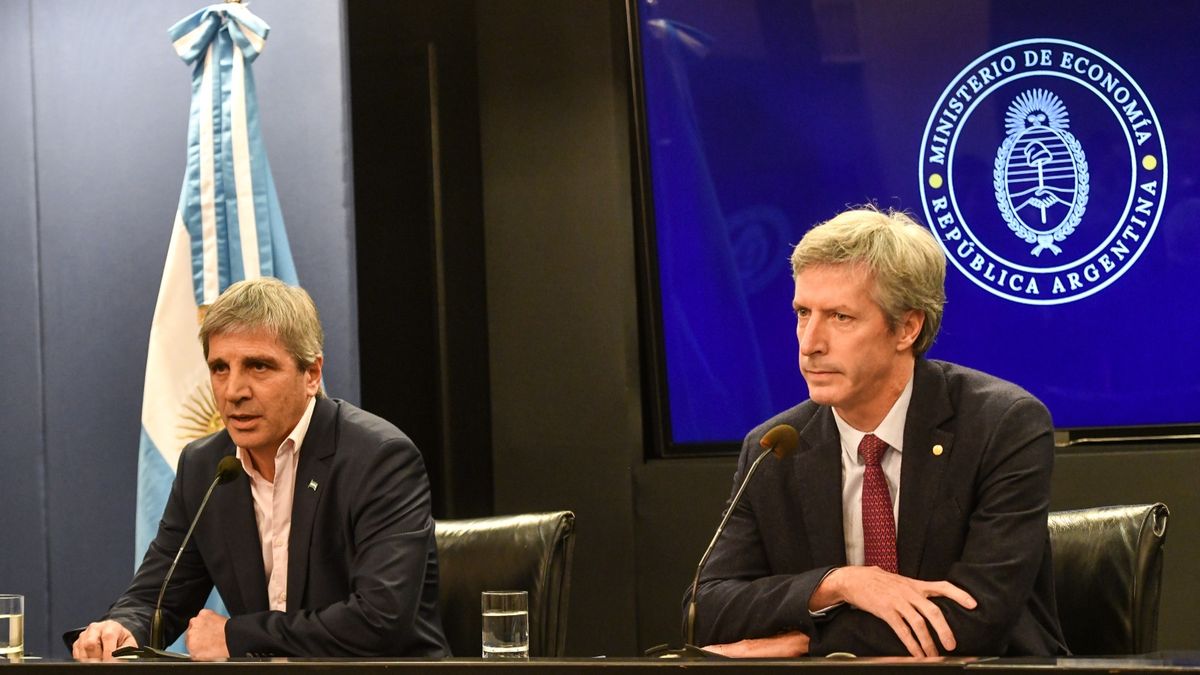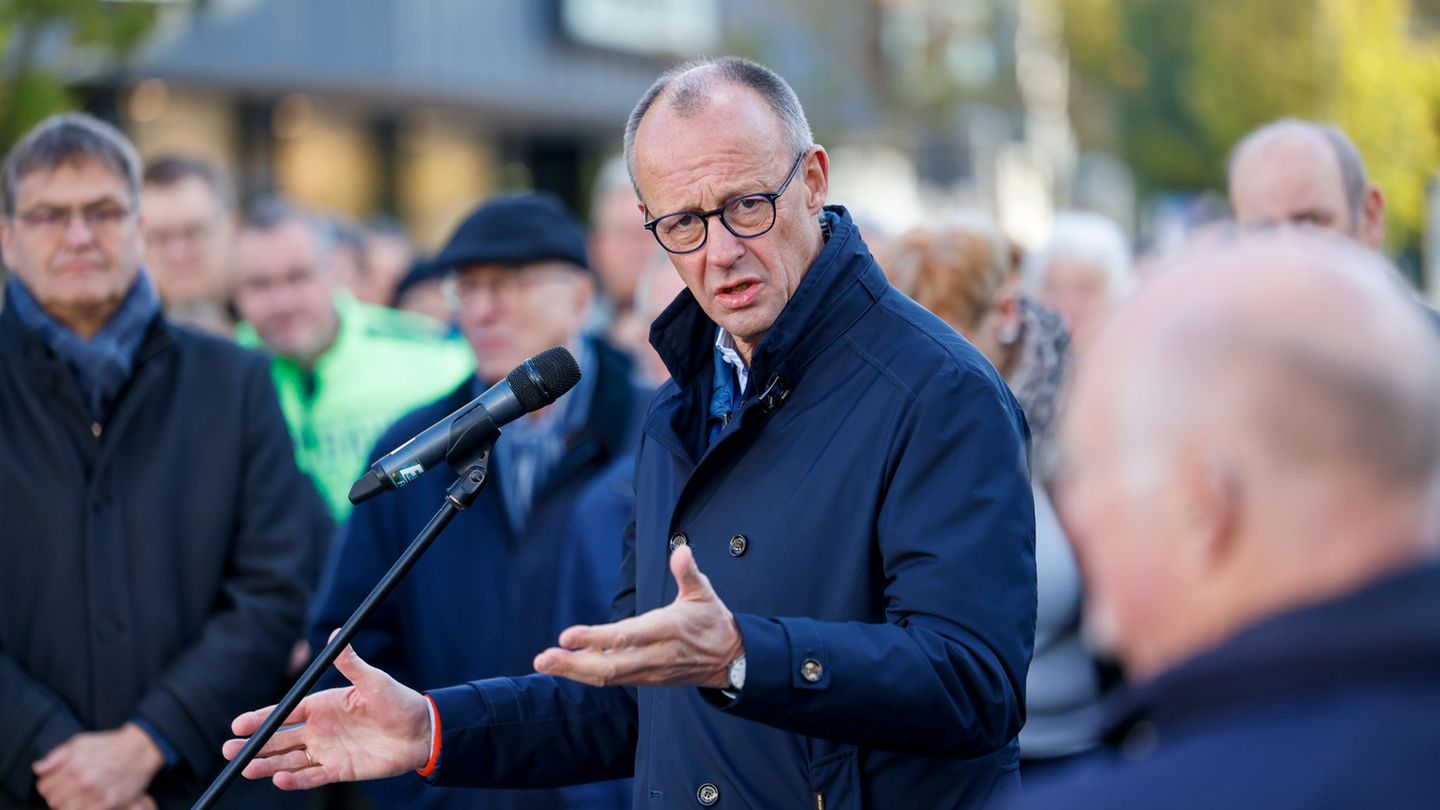Now begins the consolidation of the program that will involve “the reduction and subsequent disappearance of the crawling peg and the lifting of the stocks, as the president said this Saturday in radio statements in which he made it clear that A sudden correction of the exchange rate is not in the government’s plans.
On the contrary, he said that “If we reconfirm that inflation is around 2.5%, that is, that December was 2.5%, we are in a position to lower the crawling peg from 2% to 1%… and if during “Three months we verify that inflation at 1.5%, the crawling peg is removed,” Milei anticipated.
The president is increasingly convinced of his program. And the results allow you to gain room for maneuver. In this sense, he announced that “We have already covered all the payments (in foreign currency) for the year”. And he confirmed it by pointing out below in the report: “Or why do you think the country risk falls to 584? because now They realized that we have the money to pay.”
In this sense, he expressed his expectation of close an agreement with the International Monetary Fund “and/or with very important funds in the world.” The negotiations with the international organization, as Ámbito has been anticipating, are underway and It is estimated that a new agreement could be signed at the beginning of March, according to sources in Washington.
The possibility of a new understanding has solid foundations since the Argentine government has over-met most of the macroeconomic requirements requested by the Fund, particularly the fiscal goals. “There is little to object to and, on the contrary, it helps the IMF to show Argentina’s good results. as an example of the viability of the policies it usually recommends,” say international analysts.
The president also clarified that it will not involve new indebtedness – it is not necessary because the country has a financial surplus in the Treasury accounts – but rather to “roll over” old debt and that the resources will be used to strengthen the Central Bank’s balance sheet. .
Faced with the prospect of a new agreement, opposition legislators will surely demand that it be approved by Congress. In this regard, Casa Rosada sources point out that “parliamentary acceptance is not appropriate because it is not new debt.”
The markets’ expectation is that, with the arrival of funds from abroad, the Government progress in lifting the stocks. Milei addressed the issue by specifying that the implicit rate that was paid for the repo operation with the banks is 450 points, a level that shows that the market views that the country risk will continue to decline.
In his opinion, what is missing is for Argentina’s ratings to rise and for this he considered it necessary to open the trap. And he announced that “the day we open the stocks, that’s it, “Argentina’s rating shoots through the roof”. After all, Milei specified that the country is one of the countries with the best fiscal situation in the world, since it is among “the five nations that have a surplus in the financial line.”
Backwardness
The former Minister of Economy, Sunday Cavallo He stated in his blog that the official exchange rate is delayed (he spoke of “an exaggerated real appreciation of the peso that can be estimated at around 20%), reviving the debate about the level of the dollar.
The president is emphatic when pointing out that “the dollar is not behind” and, following the Austrian school of economic thought to which he adheres, he considers it an act of “fatal arrogance” to attempt to determine the value of the exchange rate.
Domingo Cavallo Former Minister of Foreign Affairs of the Argentine Nation
Domingo Cavallo reappeared with an article with observations on economic management.
Mariano Fuchila
He explained that there were three models in which the currency appreciated. The Kirchnerist based fiscal deficit financed with monetary emission, which causes prices to rise. To stop this rise, it fixes the exchange rate with the logical consequence of the loss of reserves. This is not the current situation since there is a fiscal surplus, 25 billion dollars of reserves were accumulated and the gap was substantially reduced.
A second model is the one that applied Mauricio Macri with the financing of the fiscal deficit through external debt. The income of debt dollars ends up appreciating the peso. Milei remembers that in addition to having a surplus in the Treasury accounts, he canceled debt for 30,000 million dollars.
Finally, he referred to the model of the former Minister of Economy, José Alfredo Martínez de Hozwhich financed the fiscal deficit with issuance and absorbed the surplus of pesos by raising the interest rate and, in this way, contained the dollar. On the contrary, the La Libertad Avanza government took office with an interest rate that was 235% annually and today it was reduced to 35%.
However, he also showed signs of pragmatism in his politics. It was when he remembered that, after deciding on zero emissions, the Central Bank had to buy 5,000 million dollars because otherwise “the exchange rate would go to the floor, to 700 pesos.” He explained that, as the financial market adjusts quickly and the goods market slows, this situation would have “led a lot of companies to bankruptcy.”
WITHHOLDINGS
One of the sectors that looks most closely at the exchange rate is the countryside. The president ratified his decision to eliminate withholdings as certain conditions are met. In his words, that the economy grows and that there is a sustained increase in income. In other words, the priority is fiscal balance, but he ratified his commitment to lower taxes, first reducing the export duties that weigh on the countryside and then – he announced – he will go for the elimination of the check tax.
The favorable international expectations generated by the Milei government may cause a additional capital income that tends to appreciate the dollar more. Faced with this optimistic view, other analysts warn that the strengthening of the dollar in the international market, the devaluation of the real and the fall in raw material prices can complicate the external front.
Source: Ambito
I am a 24-year-old writer and journalist who has been working in the news industry for the past two years. I write primarily about market news, so if you’re looking for insights into what’s going on in the stock market or economic indicators, you’ve come to the right place. I also dabble in writing articles on lifestyle trends and pop culture news.




